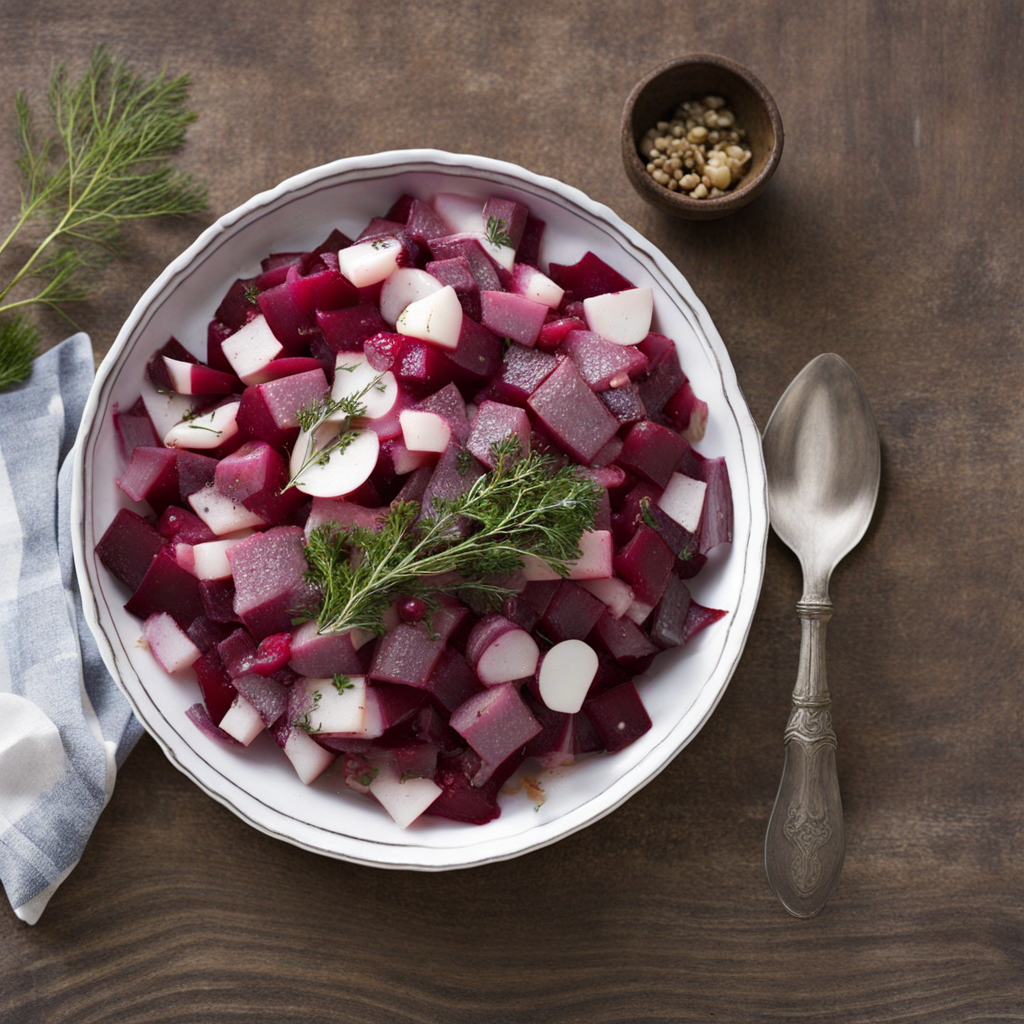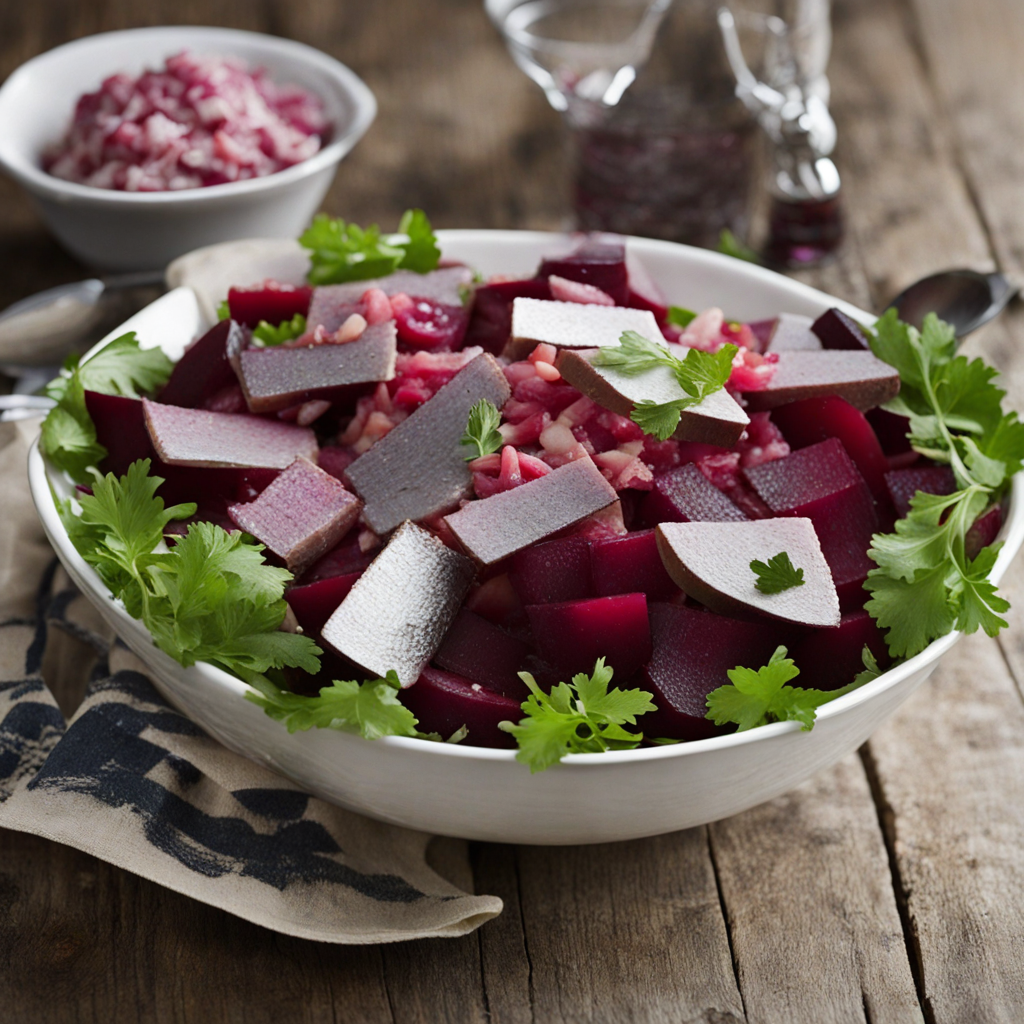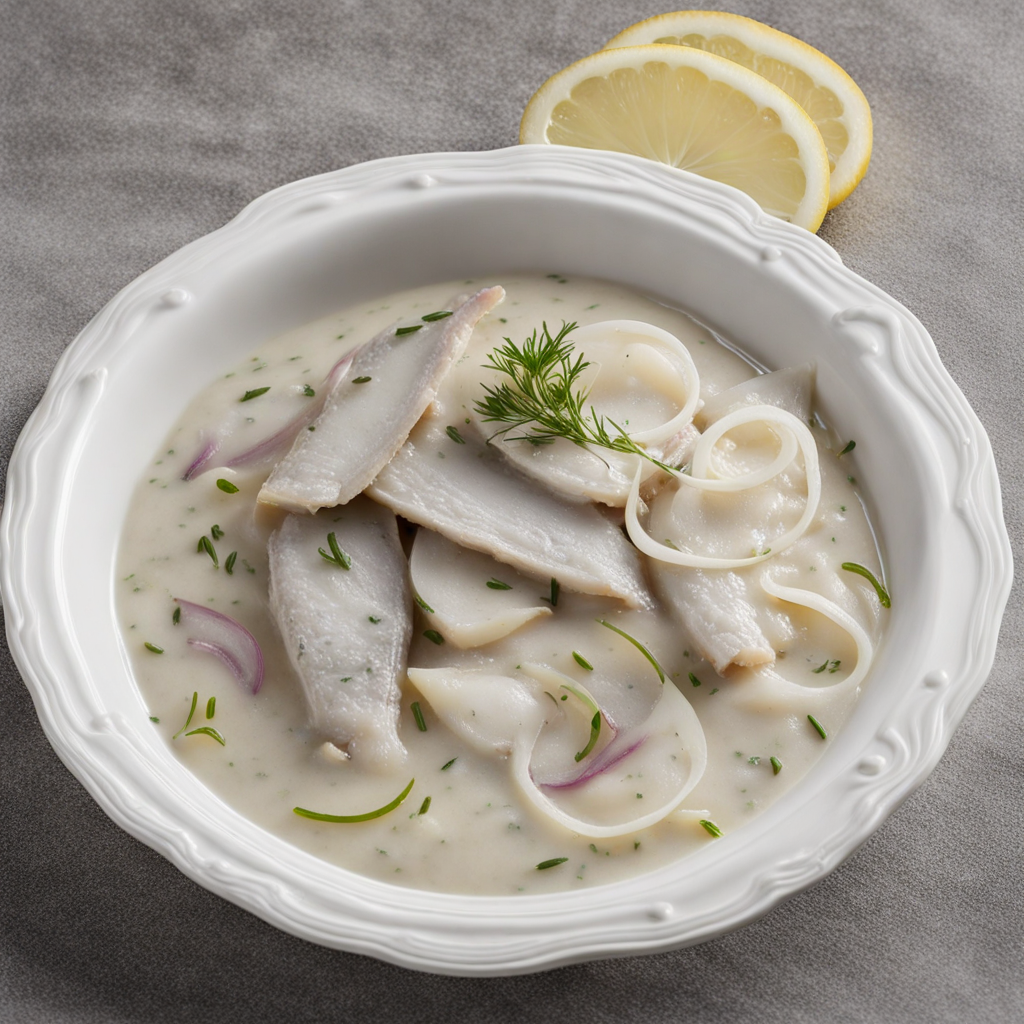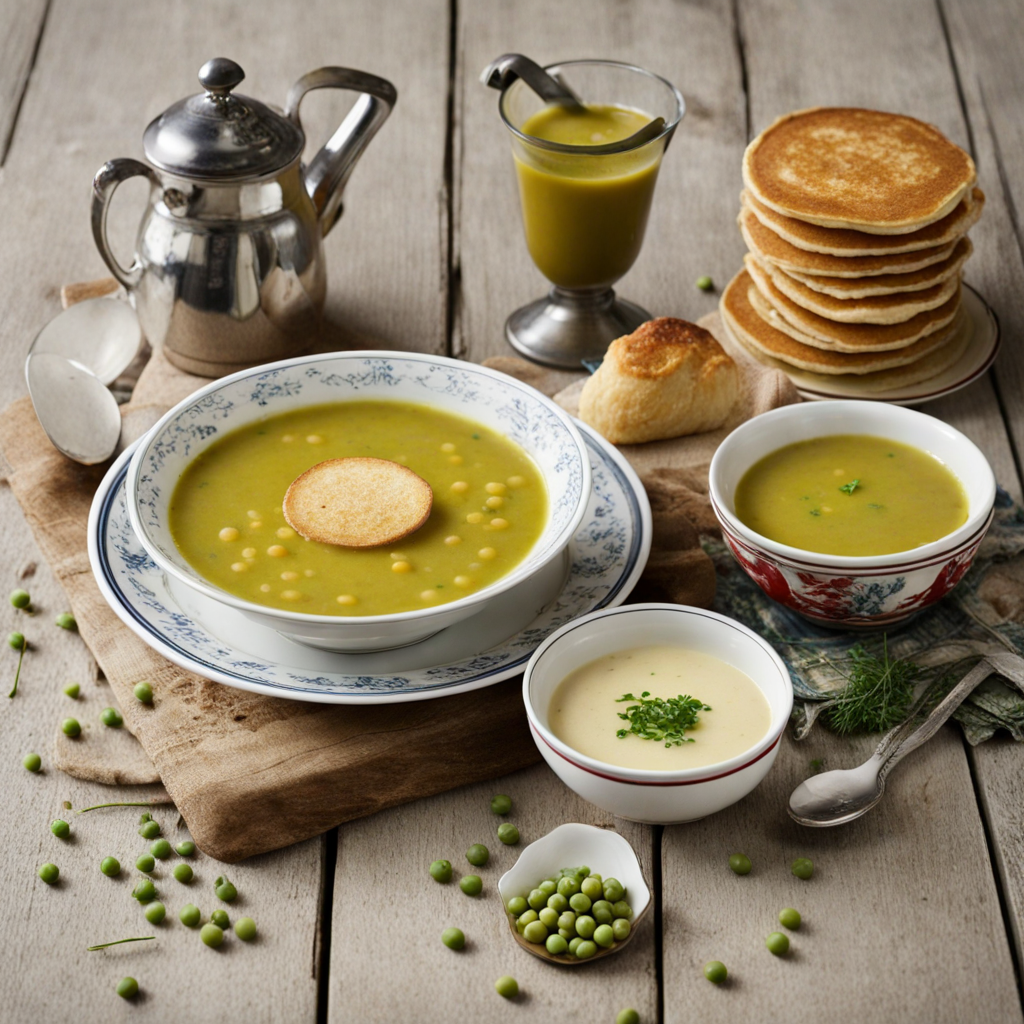Swedish Beetroot and Herring Salad
Swedish Beetroot and Herring Salad, known as "Sill med Rödbetor," is a vibrant dish that beautifully showcases the flavors of Sweden. The salad features tender, earthy beetroots that are typically boiled and diced, bringing a sweet and slightly tangy profile to the dish. The beetroots are often complemented by the briny, savory taste of herring, a traditional Scandinavian fish that adds a depth of flavor. The combination of these two key ingredients creates a striking contrast in both color and taste, making it an eye-catching centerpiece on any table. The salad is usually dressed with a creamy mixture of sour cream or yogurt, which adds a rich, smooth texture that balances the sharpness of the herring and the sweetness of the beetroot. Chopped onions and fresh dill are often included, enhancing the dish with aromatic notes that evoke the essence of Swedish cuisine. This combination not only amplifies the overall flavor but also gives the salad a refreshing quality, making it a perfect accompaniment to hearty dishes or served as part of a festive smorgasbord during holidays and special occasions. Served chilled, Swedish Beetroot and Herring Salad can be enjoyed as a standalone dish or paired with crispbread, potatoes, or even as a filling for open-faced sandwiches. Each bite offers a delightful mix of textures and tastes, with the sweetness of the beets, the saltiness of the herring, and the creamy dressing coming together in harmony. This salad is not just a culinary experience; it’s a celebration of Sweden’s rich culinary heritage, inviting food lovers to savor the unique flavors that define this beloved dish.
How It Became This Dish
Betor och Sill Sallad: A Culinary Journey Through Swedish Tradition #### Origins of Betor och Sill Sallad Betor och sill sallad, or beetroot and herring salad, is a quintessential Swedish dish that embodies the spirit of Scandinavian culinary traditions. Its origins can be traced back to the early 19th century, a time when the Swedish diet was heavily influenced by the agrarian lifestyle and the availability of local ingredients. Beetroot, known for its vibrant color and earthy flavor, was cultivated widely in Sweden and became a staple in many households. Herring, on the other hand, has been a significant part of the Swedish diet for centuries, thanks to the country’s extensive coastline and fishing heritage. Herring was traditionally preserved through methods such as salting, pickling, or smoking, which allowed it to be stored for long periods. This was especially vital during the long, harsh winters when fresh produce was scarce. The combination of these two ingredients—a root vegetable and a preserved fish—reflects the ingenuity of Swedish cooks who sought to create dishes that were not only nutritious but also colorful and visually appealing. #### Cultural Significance Betor och sill sallad is more than just a dish; it is a symbol of Swedish culture and identity. The salad is often served during festive occasions, particularly during Midsummer celebrations and Christmas feasts. These events are steeped in tradition and communal gatherings, and food plays a crucial role in fostering a sense of togetherness. The vibrant red of the beetroot, contrasted with the silvery hues of herring, creates a striking visual that enhances the celebratory atmosphere. In Sweden, herring is often associated with the concept of "sill," which refers to various traditional preparations of this fish. The salad showcases the versatility of herring, merging it with the sweetness of beets and a creamy dressing, often made with sour cream or mayonnaise. This combination not only highlights the flavors of the ingredients but also serves as a reminder of the importance of seasonal and locally sourced produce in Swedish cooking. #### Development Over Time As Sweden evolved through the 19th and 20th centuries, so did the preparation and presentation of Betor och sill sallad. In the early days, the salad was a simple dish, typically prepared in family kitchens and served at home. However, as culinary influences from neighboring countries and regions spread, the dish began to take on new forms. In the mid-20th century, as Sweden experienced a wave of modernization and urbanization, the traditional food landscape began to shift. The post-war period saw an increase in convenience foods and ready-made meals, which affected how people approached cooking. However, despite these changes, many Swedes held onto their culinary heritage, and dishes like Betor och sill sallad continued to be cherished as part of the national identity. The salad also found its way onto restaurant menus, where chefs began to experiment with its presentation and ingredients. While the traditional recipe remained popular, modern interpretations began to emerge, incorporating elements such as dill, apples, or even horseradish for added flavor. This evolution reflects a broader trend in Swedish cuisine, which balances respect for tradition with a willingness to innovate. #### Ingredients and Preparation At its core, Betor och sill sallad consists of a handful of key ingredients: pickled herring, boiled beetroots, and a creamy dressing. The preparation begins by cooking the beetroots until tender, allowing their natural sweetness to develop. Once cooled and peeled, they are diced into small cubes that provide texture and color to the dish. The herring is typically prepared in a sweet-sour brine, which helps to enhance its flavor profile. Various types of herring can be used, including mustard herring or onion herring, each contributing its own unique taste to the salad. The combination of the salty fish with the sweet beets creates a delightful contrast that is both satisfying and refreshing. The dressing plays a crucial role in tying the flavors together. A classic Swedish dressing might consist of sour cream, mayonnaise, and a touch of mustard, seasoned with salt and pepper. Some variations also include chopped onions or fresh herbs, which add a burst of freshness and complexity. #### Contemporary Relevance In recent years, Betor och sill sallad has experienced a renaissance as part of the broader movement to celebrate traditional foods and local ingredients. As the farm-to-table movement gains momentum, many chefs and home cooks alike are revisiting classic recipes and emphasizing the importance of sustainability in food preparation. Swedes today are increasingly interested in the stories behind their food, leading to a resurgence of interest in culinary heritage. Betor och sill sallad is often featured at food festivals, where chefs showcase their interpretations alongside traditional recipes. The dish’s versatility allows for endless creativity, making it a favorite among those looking to experiment with flavors while honoring tradition. Moreover, with the rise of dietary awareness, variations of the salad have emerged to accommodate different dietary preferences. For example, vegetarian and vegan adaptations replace herring with alternatives such as marinated mushrooms or smoked tofu, ensuring that everyone can enjoy the vibrant flavors of this beloved dish. #### Conclusion Betor och sill sallad is more than just a salad; it is a celebration of Swedish culinary heritage, a reflection of the country’s history, and a testament to the resilience of traditional foods in the face of modernization. As it continues to evolve and adapt to contemporary tastes, this dish serves as a reminder of the importance of local ingredients and the communal experiences that food can foster. Whether served at a festive gathering or enjoyed as a simple meal at home, Betor och sill sallad remains a cherished part of Sweden’s gastronomic landscape, connecting generations through the shared love of good food.
You may like
Discover local flavors from Sweden







